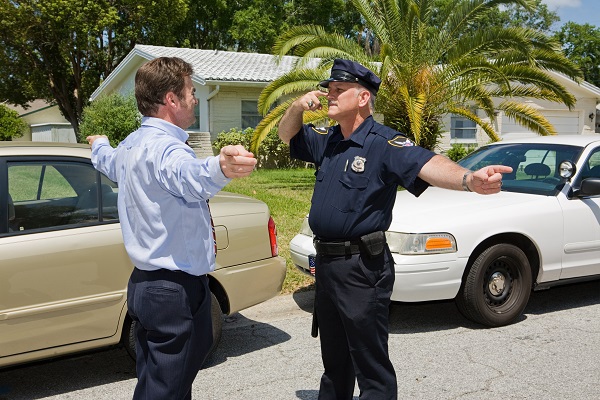Challenging Horizontal Gaze Nystagmus Test Administration

People charged with DUIs can and do challenge Horizontal Gaze Nystagmus Test administration. The Horizontal Gaze Nystagmus Test (HGN test) is one of the Standardized Field Sobriety Tests (SFSTs) given to suspected drunk drivers at the roadside by law enforcement. To determine how to challenge HGN test administration, learn how the test is administered and then how police officers do it incorrectly.
How is the HGN test correctly administered?
The National Highway Traffic Safety Administration provides law enforcement with guidelines on administering the HGN test. This article only summarizes the detailed guidelines.
First, the officer should instruct the driver to place his feet together and his hands by his sides. The officer should state that the driver will be asked to follow a stimulus (such as the tip of a pen) with his eyes and that he should not move his head. The officer should ask the person if they understand and get acknowledgement from the driver.
Then, the officer should place the stimulus between 12 and 15 inches away from the person’s nose, just above his eye level. The stimulus should be moved or passed back and forth, and there are specific requirements for how many times to pass the stimulus per eye and for how to move the stimulus. There are five types of passes, equal tracking, smooth pursuit, maximum deviation, onset angle of nystagmus, and vertical nystagmus. Each of these passes have, again, extremely specific requirements for administration set forth by the NHTSA.
How do people administer the HGN test incorrectly?
One study found that the HGN test was administered incorrectly 90% of the time. The total test should take at least 82 seconds, and usually takes closer to 90 seconds. Any test that took less than 90 seconds could be suspect, because the officer may have administered it too quickly or missed a set of passes. Sometimes officers do not hold the stimulus for at least 4 seconds at the maximum deviation, move the stimulus too close to the suspect, or arc/curve the stimulus as it moves around.
Another problem with the HGN test may arise during testimony in court. Law enforcement officers cannot testify to a relationship between HGN test results and any particular amount of blood alcohol concentration. Testimony may only indicate that the HGN test administration indicated that the suspect was intoxicated. Everyone has some nystagmus in their gaze, but depressants increase the visibility of nystagmus to observers. Nystagmus, or rapid uncontrollable eye movement, only shows that a person has a central nervous system depressant in his body, not that he has consumed alcohol.
If you are facing DUI charges after taking the SFSTs, seek out an attorney who knows the Oklahoma criminal law system inside and out. Clint Patterson, Esq., of Patterson Law Firm, a former Tulsa prosecutor now using his trial experience and expert-level knowledge of DUI science to defend drivers, has the experience and the insight to evaluate the strengths and weaknesses of your case. To schedule a case evaluation, visit Patterson Law Firm online or call Clint’s office at (918) 550-9175.

